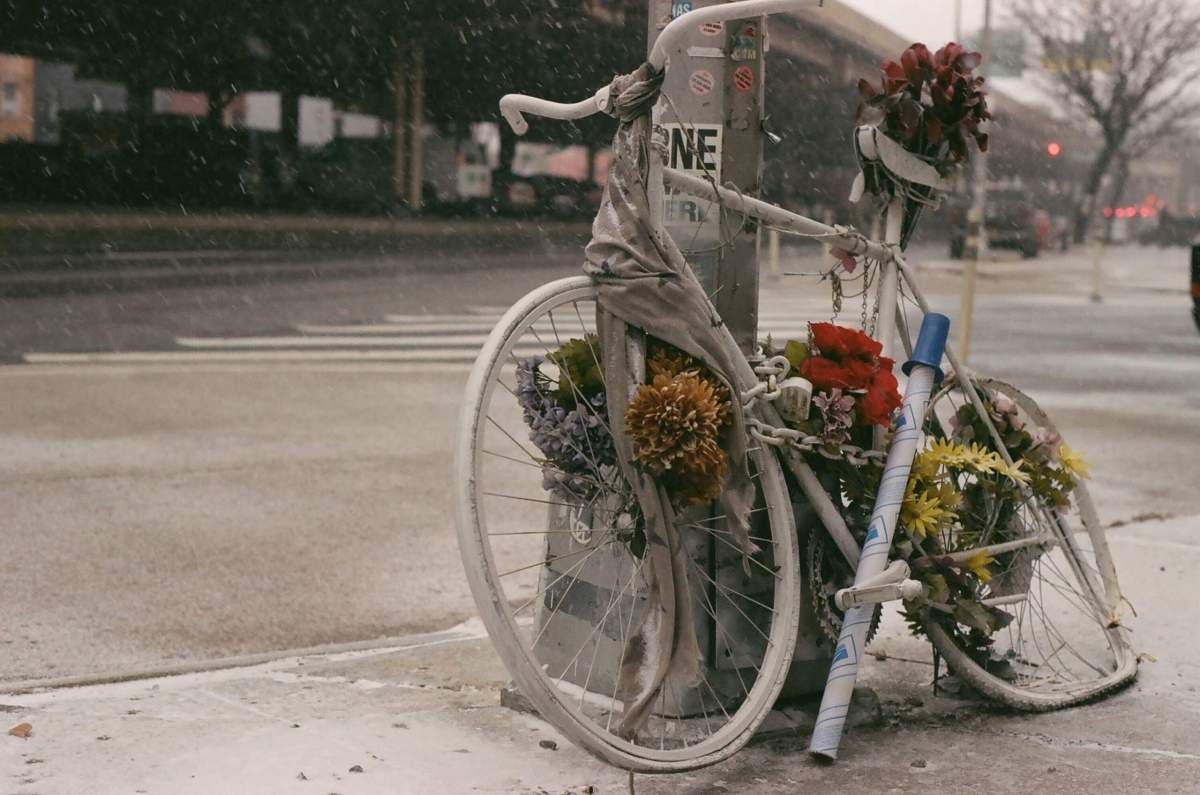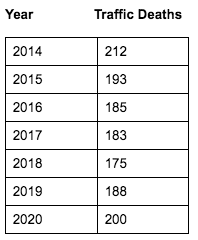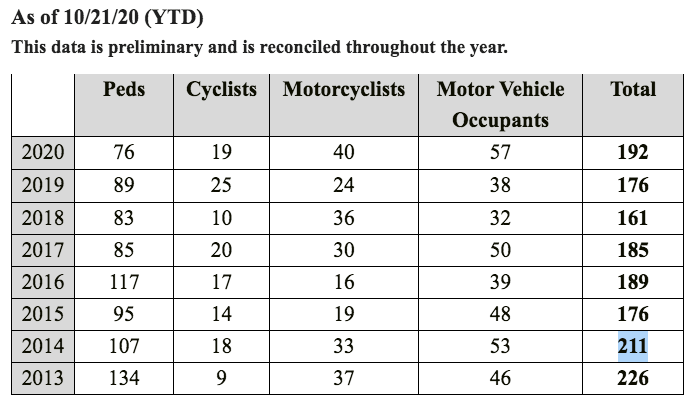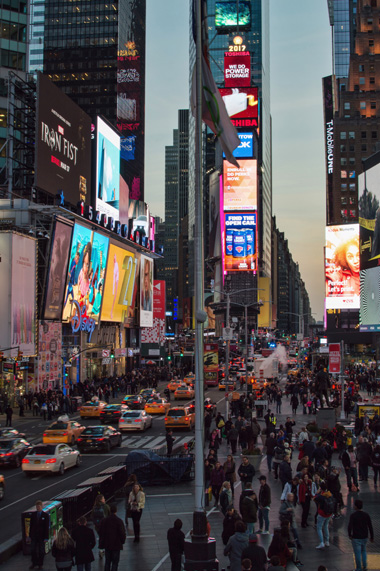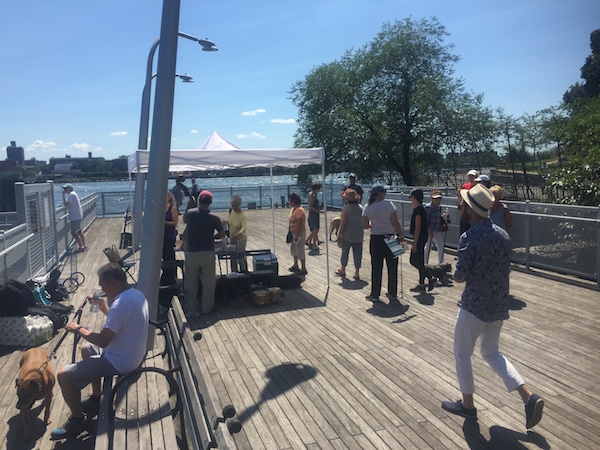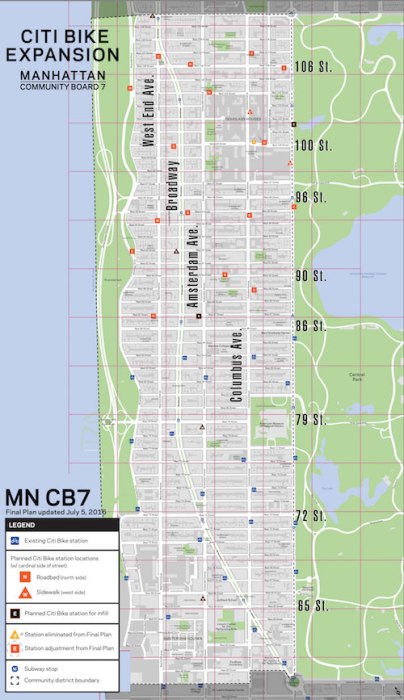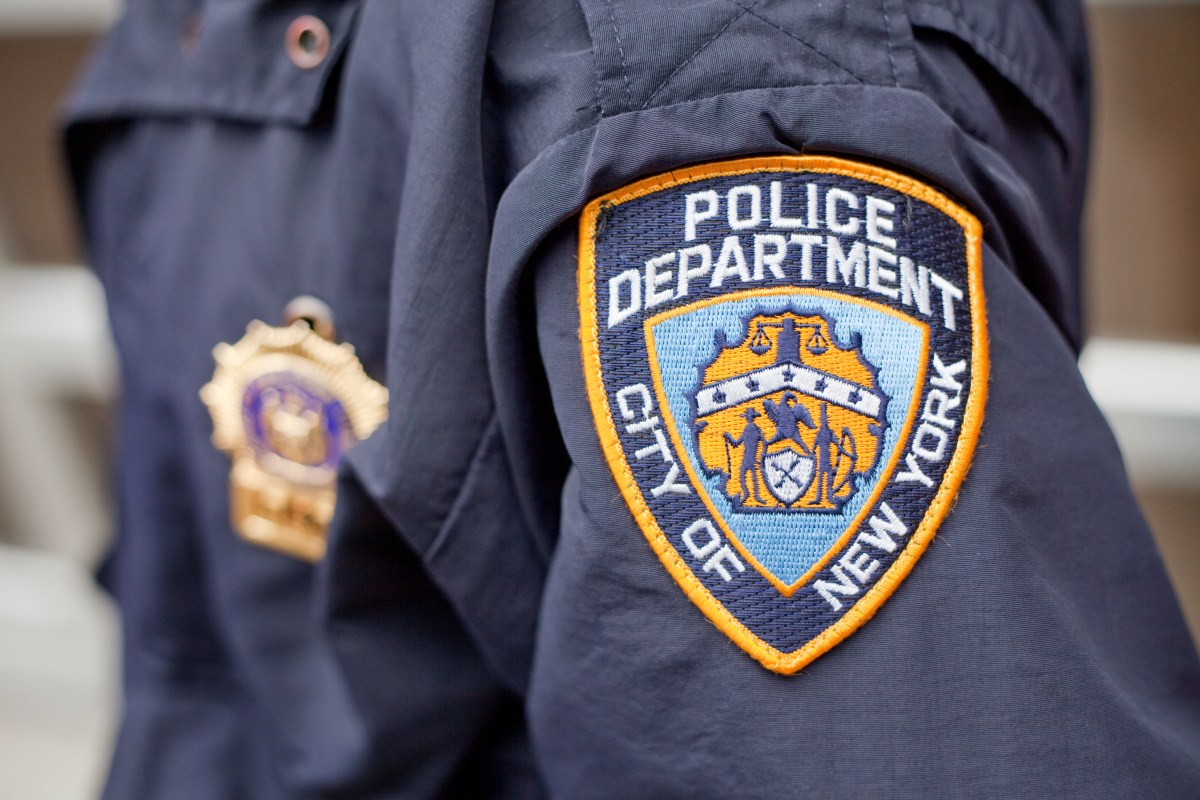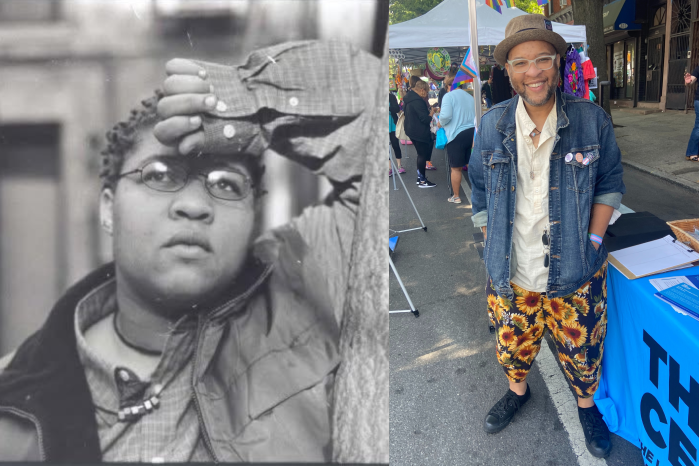If 2014’s 211 traffic deaths were the high watermark of New York City’s Vision Zero program, it would appear that the program has not made it very far since its launch six years ago.
But the City Department of Transportation is pushing back on an activist claim that 200 people have died on the street of New York City so in 2020, claiming reconciled data shows 192 deaths.
Nonetheless, Transportation Alternatives and Families for Safe Streets say the de Blasio administration took the wrong tack in cutting funds to the Vision Zero and Green Wave programs as well as delaying the Dangerous Vehicle Abatement Program and Streets Master Plan.
“At least 200 people have died in traffic crashes on New York City streets to date in 2020, with 70 days remaining in the year,” Transportation Alternatives Executive Director Danny Harris said. “This is shaping up to be the deadliest year for traffic violence during Mayor de Blasio’s tenure. If the rate of death on our streets continues unchanged through the remainder of the year, we will see 243 total deaths in 2020. Sadly, we know that the fatality rate tends to spike between Halloween and the end of Daylight Saving Time in early November.”
In 2019, a similar onslaught of cyclists deaths was seen in the waning months of the year when the number quickly increase to 29 total by the end of December. By September of last year, there were 22 deaths while 2020 has seen 19 as of Oc. 21, according to DOT.
“Every crash is preventable, but only if city leaders take responsibility for safety on their streets—and take it seriously. What does it say about our city’s leaders when the death toll has risen to such a high level, even though traffic was essentially shut down for almost three months?” Families for Safe Streets co-founder Amy Cohen. “Any time someone dies as a result of a traffic crash, we expect our leaders to understand why and fix the problem. They need to be asking what could have prevented this tragedy? What could have prevented families like mine from such unimaginable grief? And what can prevent the next family from going through the same heartbreak?”
While the onset of the COVID-19 pandemic in March saw street bereft of vehicles for months on end as quarantines had people sheltering in place and nowhere to go with businesses closed, it would seem counterintuitive that the number of fatalities would remain high. But a a second epidemic, that of speeding, became apparent as camera violations increased.
Between March 23 to May 31, 77% of all summonses issued by the city were for speeding, according to a report from the Independent Budget Office.



